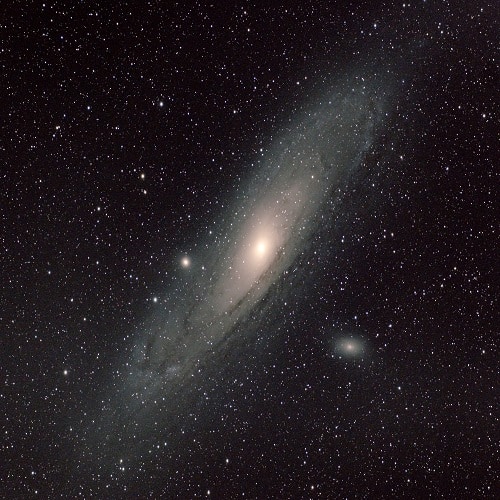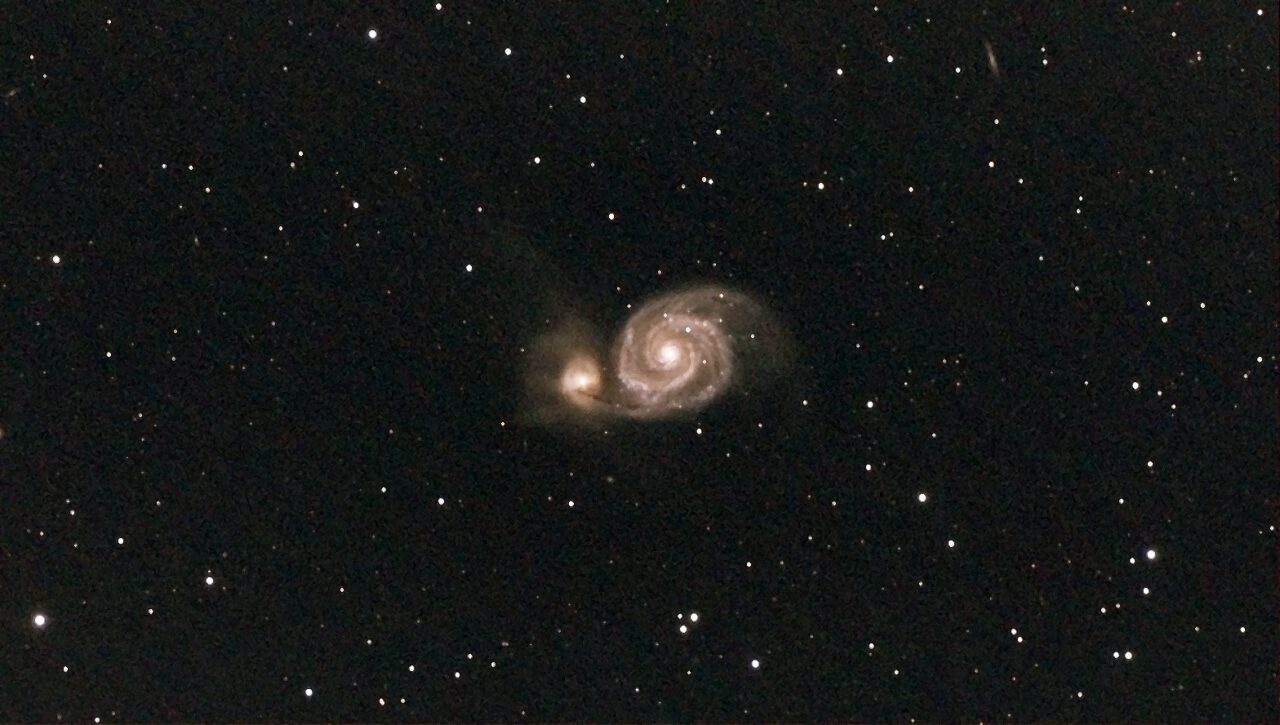Before the twentieth century, astronomers had already been viewing galaxies through telescopes for hundreds of years. They just didn’t know it.
They called such objects “spiral nebulae” and there was much speculation and debate as to their nature. Some astronomers had ventured that these strange objects might be other “island universes” like the one surrounding us. But the consensus was that the Milky Way was the entire Universe, and spiral nebulae must reside inside it.
Then in 1924, Edwin Hubble observed a type of star called a Cepheid variable in the Andromeda Nebula. This observation allowed him to calculate its distance, placing it far outside the bounds of the known universe. Though his findings took some years to be published and accepted, they almost single-handedly blew the universe wide open. Now we know there are billions of other galaxies, some like our own, some very different.
The good news for amateurs like me and you is that yes, we can view dozens of distant galaxies right from our backyards, if we have the right equipment and know where to look.
In this article we’ll meet three amazing galaxies and their companions, discuss how to find them, how to view them, and what to expect.
But first, let’s go over a few basics for viewing galaxies.
Galaxy Viewing Tips
Get to dark skies
Galaxies are some of the faintest and most challenging objects out there. While there are many bright enough to observe from the suburbs, all of them will benefit from darker skies.
Use star charts
Unless you have a Go-To telescope capable of finding objects on its own, you will need to use a method called star-hopping to find galaxies. In short, you start from the nearest bright star to your target and hop your way over one star at a time. And while a phone app like Sky Safari can be useful, star charts are much more detailed. I use the Sky & Telescope Pocket Sky Atlas.
Let your eyes adapt
Your night vision is much keener after your eyes have had time to adapt to the low light conditions. Avoid bright lights and screens for at least 20 minutes before observing.
Use averted vision. This pro tip means to look beside the object instead of directly at it. Your peripheral vision will often pick up more detail. You can even try giving the telescope a light jiggle.
Have patience
Even the mightiest galaxies can seem unimpressive at first glance. Take the time to appreciate what you are seeing through the eyepiece. Try looking at some pictures of the target galaxies beforehand so you have something to compare to, which can help your mind fill in the details.
Andromeda Galaxy (M31)
The one that started it all, M31 is the closest major galaxy to Earth at about 2.5 million light years. It is part of our galaxy cluster, the Local Group.

What You Need
M31 is an enormous object, with a visual diameter of about six full moons. To see its full extent, binoculars are best. A telescope with a short focal length and a wide-field eyepiece may also work. However, virtually any telescope will show you its bright core.
How to find it
Start by identifying the Square of Pegasus. The constellation Andromeda is a chain of three stars which trails off the star Alpheratz at the top left corner of the Great Square of Pegasus. Hop your way to Mirach, the star in the middle of the chain. From Mirach, there is an offshoot of two stars forming a perpendicular line pointing up. Follow this offshoot about six degrees and it will lead you to a bright, hazy patch which is M31.
What to expect
From a dark site, you can see M31 with the naked eye, appearing as a smudged-out star. A telescope will reveal a bright, elliptical core about thirty arc-minutes in diameter. As a bonus, you can also see companion galaxies M32 and M110 in the same view. Only under dark, moonless skies will you start to make out its beautiful dust lanes and star-forming knots of gas in its spiral arms.
Whirlpool Galaxy (M51)

This famous galaxy in Canes Venatici was the first to be identified as spiral-shaped. It lies about 30 million light years from Earth.
What you need
Though M51 can be glimpsed in binoculars, a telescope and reasonably dark skies are necessary to really see it.
How to find it
Start at Alkaid, the last star in the handle of the Big Dipper, and drop about 3.5 degrees down. You will see an isosceles triangle of 7th-magnitude stars with M51 just below them.
What to expect
The most striking thing about M51 is that it is not one galaxy, but two. Through a small telescope you will see a pair of misty blobs around ten arc-minutes across. The larger blob is M51 and is connected to its companion by one of its spiral arms. Face-on spirals like this are tough targets because their light is more spread out compared to galaxies viewed from an angle.
An aperture of 8 inches or more will help you resolve some detail in the spiral arms, but dark skies will give the greatest boost.
These two galaxies are interacting due to a collision hundreds of millions of years ago.
Bode’s Galaxy & Cigar Galaxy (M81/M82)

Another two-for-one view, this is a fine sight for telescopes of any size. Both galaxies are nearby at around 12 million light years.
What you need
A pair of binoculars or a finderscope with 50mm of aperture should allow you to spot this pair under dark skies. They are readily visible in any telescope.
How to find them
Starting at Phecda, the bottom left star of the Big Dipper’s bowl, draw a line diagonally up through Dubhe at the top right corner. Extend this imaginary line the same distance again and it will put you in the vicinity of this dynamic duo.
What to expect
Even at low power, this pair is a striking sight. The galaxies are angled and spaced to appear as a pair of glowing, slanted eyes peering at you from the blackness. M81 is a spiral galaxy seen from an angle, appearing oblong, fuzzy blob with faint detail. Larger apertures will give hints of detail.
M82, viewed edge-on, appears as long, narrow cylinder. See if you can spot the “starburst” gases exploding from its centre.

